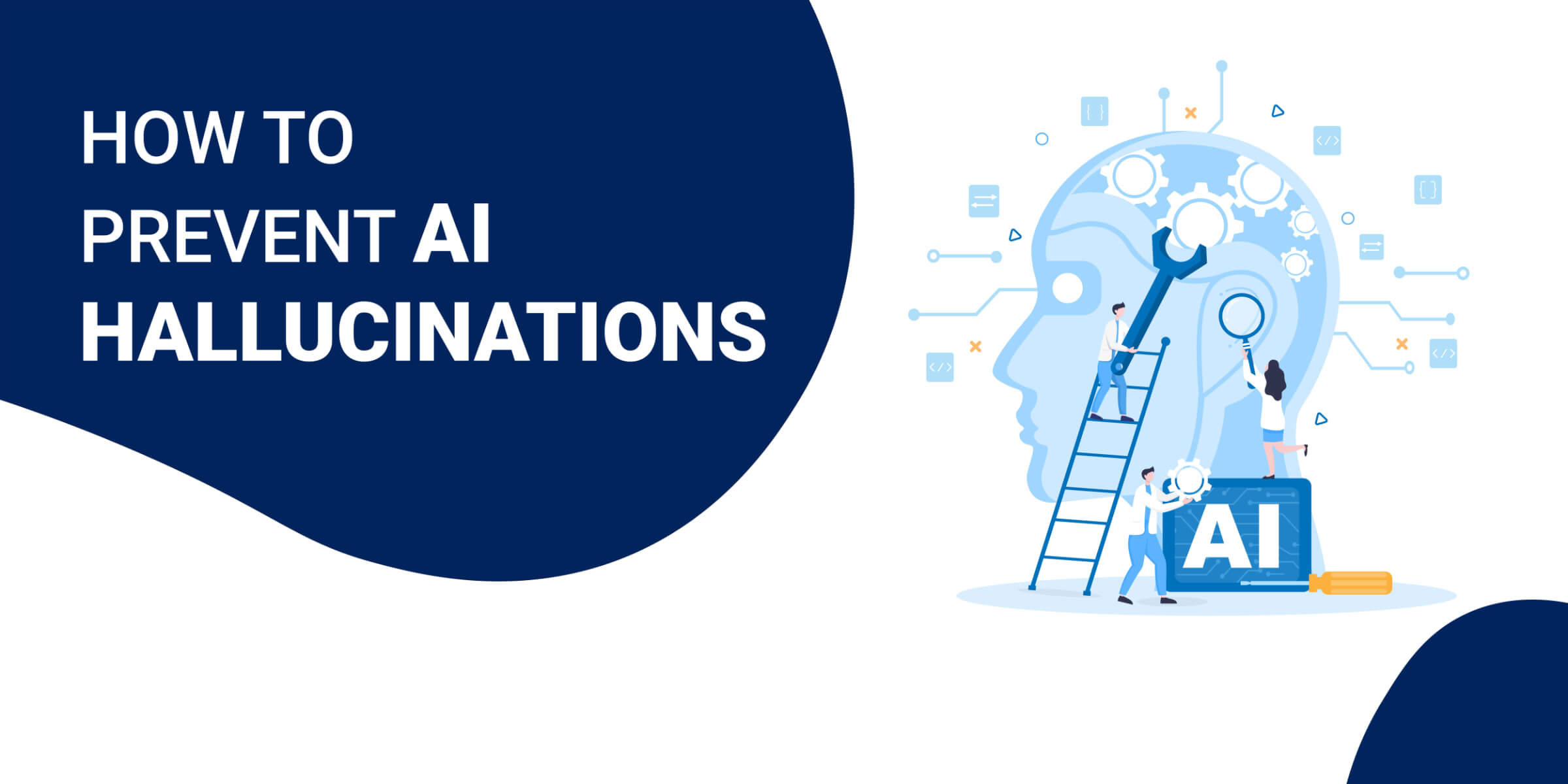After testing AI writing tools firsthand, we've seen some silly to downright incorrect information being produced through AI.
We've coined our own term of “AI-isms”, but it is more commonly referred to as “AI hallucinations”.
This is one of the emerging concerns and problems with AI and we'll walk you through what it is and how to prevent it.
Table of Contents
What Are AI Hallucinations?


AI hallucinations refer to instances where an AI system produces output that is not based on the input it receives but rather on its own internal processing. This faulty output results in the AI generating images, sounds, or even text unrelated to the original input.
In other words, AI hallucinations are like the hallucinations experienced by humans, except they are generated by machines.
What Causes AI Hallucinations?


AI hallucinations are caused by a few phenomena.
Overfitting
One of those is overfitting. Overfitting occurs when an AI system is trained on a limited dataset and then applies that training too rigidly to new data.
This misapplication can lead to the AI producing output that is not actually based on the input but rather on its own internal biases and assumptions.
Bias
AI hallucinations may also occur due to bias in the data training. If the data used to train the AI model is biased in some way, such as being dominated by certain types of data, the model may generate hallucinations that reflect those biases.
Poor Training and Model Architecture
Incomplete training and inappropriate model architecture can also cause AI hallucinations. If the generative AI model is not trained for a sufficient number of iterations, it may not be able to fully learn the patterns in the training data, which can lead to hallucinations.
And some models may be more prone to hallucinations than others, depending on the complexity of the model and the data it is trained on.
Examples of AI Hallucinations


There are many examples of AI hallucinations, some of which are quite striking. One example of a real case of hallucination in generative AI is the DALL-E model created by OpenAI. DALL-E is a generative AI model that creates images from textual descriptions, such as “an armchair shaped like an avocado” or “a cube made of jello.”
Although DALL-E can generate realistic images based on textual descriptions, it has also been known to generate hallucinations or surreal images that do not match the original description.
For example, a user may input the description “a blue bird with the head of a dog,” and DALL-E may generate an image of a blue bird with a dog's head, but the bird may have human-like eyes or be in an unusual pose. These hallucinations occur because the DALL-E model generates images based on the patterns it has learned from its training data, but it may not always be able to interpret the meaning of the input description accurately.
Another example is Chat GPT-3, a language model developed by OpenAI that can generate text based on prompts provided by users. While Chat GPT-3 is incredibly advanced and can produce highly coherent responses, it sometimes generates text that is nonsensical or even offensive. This is because the model has been trained on a vast amount of data, some of which may contain biases or problematic content.
Why AI Hallucinations Are a Problem
AI hallucinations can be a problem for a number of reasons.
AI hallucinations can generate false or misleading information, which can have negative consequences. For example, a machine learning model that generates news articles based on a given topic may generate false news stories that can misinform the public.
AI hallucinations raise ethical and accountability issues, particularly when AI is used in contexts where it can affect human well-being. It may be difficult to assign responsibility for harm caused by an AI system that has generated hallucinations.
Finally, AI hallucinations can erode trust in AI systems and hinder their acceptance. If users do not trust the output of an AI system or find it unreliable, they may be less likely to adopt and use it, limiting its potential benefits.
How to Prevent AI Hallucinations


As a user of generative AI, there are several steps you can take to help prevent hallucinations, including:
- Use High-Quality Input Data: Just like with training data, using high-quality input data can help prevent hallucinations. Make sure you are clear in the directions you’re giving the AI.
- Choose a Suitable Program: Different AI models are better suited for different tasks, and choosing the right model architecture is important for preventing hallucinations.
- Set Realistic Expectations: Generative AI is not perfect and can make mistakes, including generating hallucinations. Setting realistic expectations for what the AI can and cannot do can help prevent disappointment and frustration.
- Verify the Output: Always verify the output generated by the AI model to ensure that it is accurate and relevant. If the output does not match your expectations or appears to be inaccurate, you may need to modify your input data or adjust the model parameters.
- Report and Address Issues: If you encounter any issues with hallucinations or other unwanted behavior, report them to the developers of the AI system. Providing feedback and reporting issues can help developers identify and address potential problems.
Importance of Testing and Validation in Preventing AI Hallucinations


Testing and validation are critical components of preventing AI hallucinations. This is because even the most advanced AI systems can generate hallucinations if they are not properly trained or tested.
By conducting rigorous testing and validation, developers can identify and address potential issues before they become major problems. This can help to ensure that AI systems are reliable and trustworthy and that they are generating output that is accurate and appropriate.
In addition, testing and validation can help to identify biases or other issues in the datasets used to train AI systems. By ensuring that training data is diverse and representative, developers can reduce the likelihood of overfitting and improve the accuracy of the system's output.
Ongoing testing and validation can help to identify and address issues that may arise as AI systems are deployed and used in real-world scenarios. This can include issues related to data quality, user feedback, or changes in the environment or context in which the system is being used.
Wrapping Up
AI hallucinations are an emerging concern in the field of artificial intelligence. These phenomena occur when an AI system generates output that is not based on the input it receives but rather on its own internal processing. While there are many potential applications for AI, the risk of generating inaccurate or misleading output is a serious concern.
As AI continues to evolve and become more advanced, it will be important to remain vigilant and proactive in addressing issues such as AI hallucinations. By doing so, we can ensure that these powerful tools are used in ways that benefit society and advance our collective goals.
FAQs
What is an example of an AI hallucination?
DeepDream has many examples of AI hallucinations. It is a neural network developed by Google that can generate images from random noise. When DeepDream is given an image to process, it sometimes produces bizarre and surreal images unrelated to the original input.
Are AI hallucinations dangerous?
AI hallucinations can be dangerous if they lead to incorrect or misleading output.
Do ChatGPT responses have AI hallucinations?
ChatGPT responses are generated by an AI system, but they are designed to be as accurate and appropriate as possible. However, like all AI systems, ChatGPT can generate output that is biased or misleading if it is not properly trained or tested.
How can I prevent AI hallucinations for written content?
To prevent AI hallucinations for written content, it is important to use diverse and representative training data and to test and validate the AI system thoroughly.





















